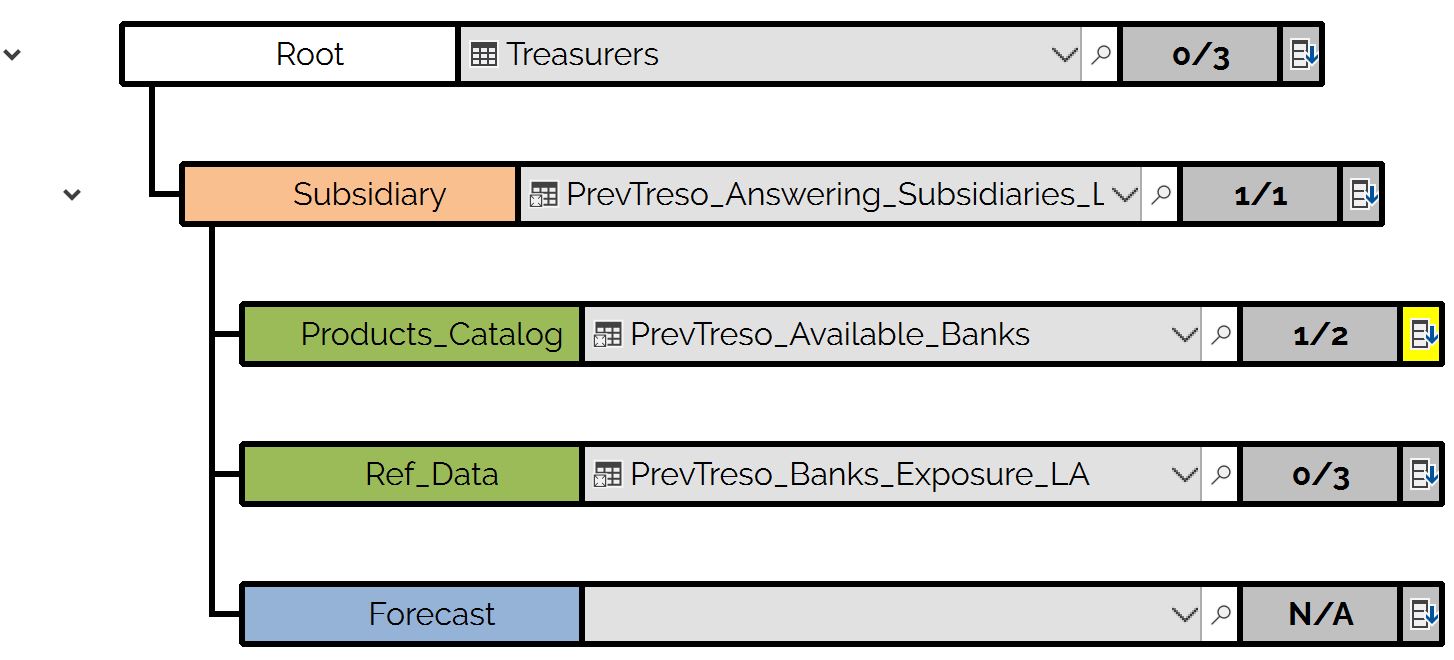How can we help?
Search for answers or browse our knowledge base
Understanding compartments
Compartments are logical objects that group and structure the fields of a document so that they can be synchronised with the client database.
A tree organization
The fields of a document can be grouped according to different structures:
- patterns (vertical range multiplication)
- transpositions (organisation of cells/fields between them in dimensional crossings)
- multi-tabs (multiplication of sheets, with their compartments)
- none of the above structures: the components are considered to be at the root of the questionnaire (multiplication according to the entities between the questionnaires).
These different structures are then organised between them in a tree-like manner within the document: a component belongs to a pattern which may itself be in a multi-tab, the components of the pattern may themselves be part of one or more transpositions.

Tree structure of the compartments of a GT document
Pattern, multi-tab and transpositions are structurally different:
- If a component can only belong to a pattern and/or a multi-tab, it can belong to several transpositions.
- A transposition can “cross” the multi-tab/pattern tree and can address components in different patterns.
Patterns and multi-tabs are called containers because they physically contain the components.
Transposition is a transformation.
However, the integration of data from a transposition into a pattern/multi-tab will only affect the fields in the pattern/multi-tab, even if components in the root or in other patterns/multi-tabs are also affected by the same transposition definition.
Data keys
Thanks to this organisation, all data sent and received in questionnaires can be organised through keys in the same way as in tables in a DBMS:
- Sent questionnaires are distinguished from each other by the diffusion axis key
- Received responses are visually distinguished from each other by the validation axis key (including diffusion axis and additional validation axis)
- Integrated responses can be distinguished simply by using the validation axis key. However, other key axis (such as dates) can be added to archive or record all responses provided by correspondents
- The compartmental structure within the questionnaire is a reflection of the hierarchical parent-child relationships between the client database tables (relationships potentially expressed by referential integrity).
To clarify this last point, each level in the compartment tree adds its own keys to the hierarchy:
- the root of the questionnaire has the key of the validation axis (diffusion + additional validation)
- a multi-tab adds the key of the multi-tab axis (which can be a concatenation of several fields)
- a pattern adds the key components of the pattern (GTKEY in GTPATTERN), provided that this key exists and that it is a natural key.
- a transposition adds the key of its off-axis value
Determining the keys in the collection process allows data to be controlled at launch, entry and integration.


